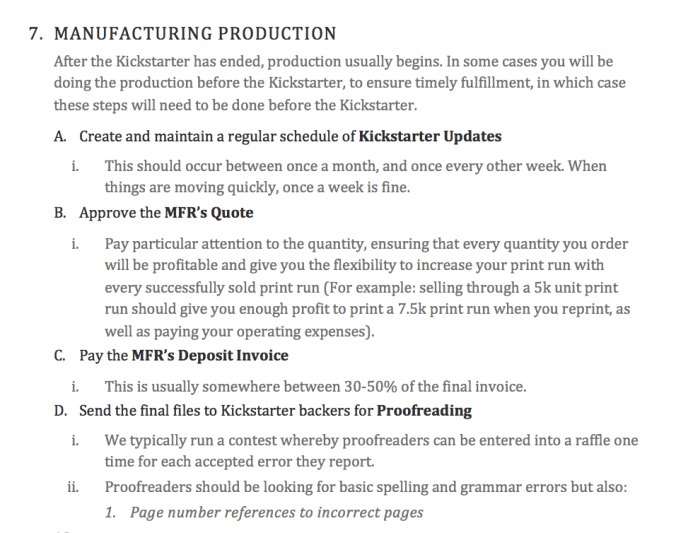A Primer on Publishing Boardgames
April 17, 2017 business manufacturing logistics video
I had the pleasure of giving a short talk on Production and Logistics with UNT’s Pixels and Pieces class. This is the third time I’ve done this, but only the first time I’ve gotten to talk about some of the lessons I’ve learned in manufacturing.
Most of my notes for this talk came right out of my Master Production Checklist, which I am consistently grateful that I have been working on. Essentially, every time that I do a task, I’ll check the checklist and see if there’s any notes about it that I may have forgotten. If I haven’t done the task before, once I’m finished with it, I’ll write up a quick “how to” on how it’s done. The hope is that as time goes on and we start hiring people, it’ll be easy to teach and train people.

A lot of founders can get this sort of “founders syndrome” where they can’t let go of anything because only they can do it right. The truth is just that they’re usually so busy that they don’t have the time to teach someone how to do it it, or they haven’t really considered themselves how it might be done in the abstract.
By working on this checklist like it was my job (and in many ways it is), I can divorce myself from the notion that I am my own company, and rather that the company is something akin to a product in and of itself. It needs to be worked on and tweaked every day, and we have to strive to make it as perfect as we can. This, hopefully, should add to our ability to grow in a stable manner, and to reproduce our successes without repeating (too many) mistakes.
UNT has been really gracious in inviting me back to give talks year after year, and for me its a real opportunity to look back at what I’ve learned and what itself is worth sharing. I often skew to problems that were particularly hard for me to solve on my own, or things I wish I would have known when I got started, and I’m always amazed that the questions veer so far off of my own experiences. Which makes sense, those people aren’t me and I’m not them, we don’t have the same questions.
In the end, what’s most interesting to me about manufacturing is how it informs game design. There are so many problems to solve in game design, from the rules, to the pieces, to (the often overlooked concept of) information design. The more you understand how your game will be made, of what materials, and using what processes, the better you can design a game.
Previous post
Why Buc-Ee’s Made Their Bathrooms Their Core Business OfferingI’d never stopped at Buc-ee’s before, which my girlfriend thought was insane. We were heading to east Texas to see her family around Thanksgiving...
Next post
Removing Agency in Horror GamesRecently, I’ve been thinking a lot about Saving Throws in RPGs. Essentially, they are the opposite mechanic from a lot of things we’re used to as...
Copyright © 2018 Failure Tolerated